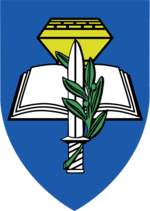Selamin

Selamin (Hebrew: צלמין)(Greek: Σελάμην), also known as Tzalmon, Selame, Salamis / Salamin, Zalmon, and Khurbet es Salâmeh (the Ruin of Salameh), was a Jewish village in Lower Galilee during the Second Temple period, formerly fortified by Josephus, and which was captured by the Roman Imperial army in circa 64 CE. Today, the ruin is designated as a historical site and lies directly south of the Wadi Zalmon National Park in Israel's Northern District. German orientalist E.G. Schultz was the first to identify the site in 1847. The site today is directly adjacent to the Bedouin village (formerly a Druze village), Sallama, towards the village's southeast, situated on a spur of a hill near Mount Salameh (now Har Tzalmon), on the eastern bank of Wady es Salameh ("Valley of Salameh"), or what is known in Hebrew as Nahal Tzalmon. The valley runs in a northerly-southerly direction, deriving its name from Khurbet es Salameh, the said ruin of Selamin (Salamis) which formerly crowned a strong and extensive site. A road accessed by 4-wheel-drive vehicle passes by the site.
Excerpt from the Wikipedia article Selamin (License: CC BY-SA 3.0, Authors, Images).Selamin
דרך נחל צלמון, Misgav Regional Council
Geographical coordinates (GPS) Address Nearby Places Show on map
Geographical coordinates (GPS)
| Latitude | Longitude |
|---|---|
| N 32.884163888889 ° | E 35.380011111111 ° |
Address
דרך נחל צלמון
דרך נחל צלמון
Misgav Regional Council
North District, Israel
Open on Google Maps









